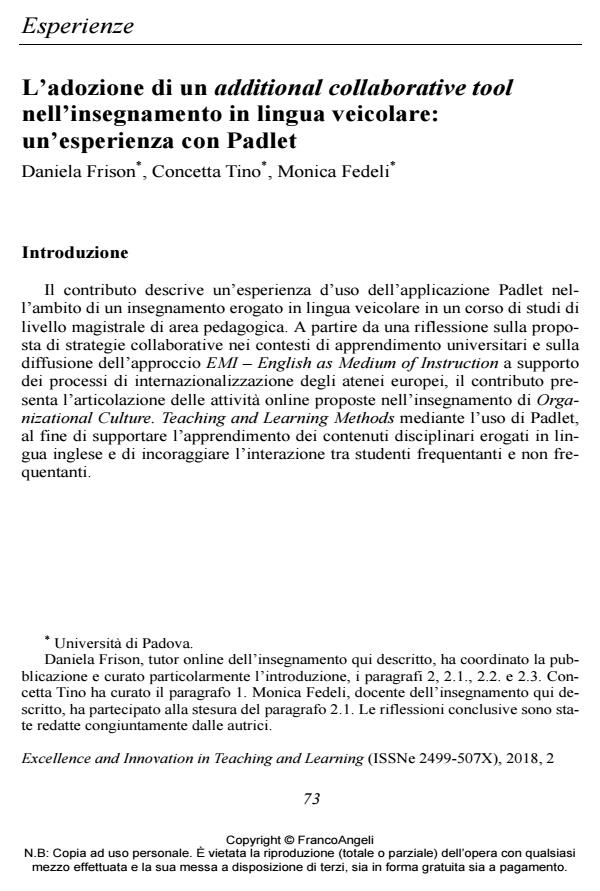L’adozione di un additional collaborative tool nell’insegnamento in lingua veicolare: un’esperienza con Padlet
Titolo Rivista EXCELLENCE AND INNOVATION IN LEARNING AND TEACHING
Autori/Curatori Daniela Frison, Concetta Tino, Monica Fedeli
Anno di pubblicazione 2018 Fascicolo 2018/2
Lingua Italiano Numero pagine 15 P. 73-87 Dimensione file 545 KB
DOI 10.3280/EXI2018-002005
Il DOI è il codice a barre della proprietà intellettuale: per saperne di più
clicca qui
Qui sotto puoi vedere in anteprima la prima pagina di questo articolo.
Se questo articolo ti interessa, lo puoi acquistare (e scaricare in formato pdf) seguendo le facili indicazioni per acquistare il download credit. Acquista Download Credits per scaricare questo Articolo in formato PDF

FrancoAngeli è membro della Publishers International Linking Association, Inc (PILA)associazione indipendente e non profit per facilitare (attraverso i servizi tecnologici implementati da CrossRef.org) l’accesso degli studiosi ai contenuti digitali nelle pubblicazioni professionali e scientifiche
The paper describes an experience of use of the Padlet application within an Italian course held in English within a master’s degree course. The contribution begins with a reflection on the proposal of collaborative strategies to engage students in the learning process and on EMI - English as a Medium of Instruction to support the internationalization processes of European universities. The paper continues with the description of the design process of collaborative activities with Padlet, in order to support the learning process of the disciplinary contents provided in English and to encourage interaction between attending and not attending students.
Parole chiave:Padlet, EMI, active learning, discussion methods, higher education.
Daniela Frison, Concetta Tino, Monica Fedeli, L’adozione di un additional collaborative tool nell’insegnamento in lingua veicolare: un’esperienza con Padlet in "EXCELLENCE AND INNOVATION IN LEARNING AND TEACHING" 2/2018, pp 73-87, DOI: 10.3280/EXI2018-002005